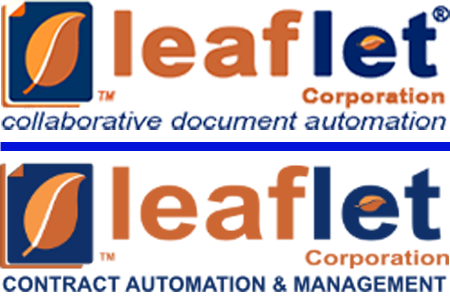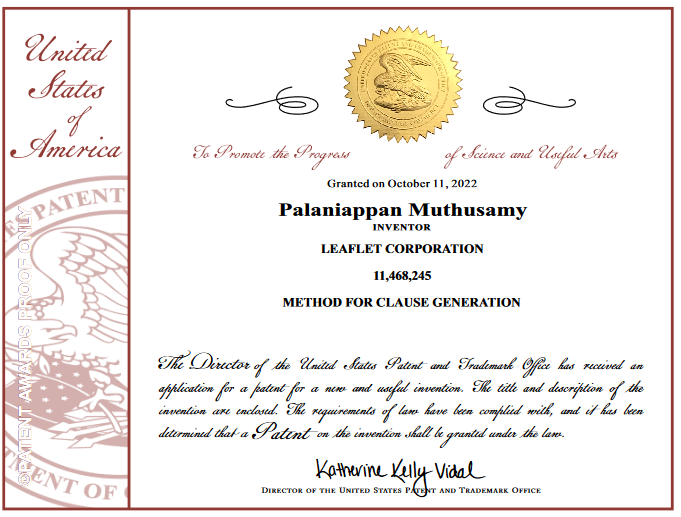Table of Contents
Design Perspective: Creating a Comprehensive Solution

Today on the Leaflet Blog we’ll be doing things a bit differently. Normally we discuss process improvements, or what to look for in different legal technology applications. Today, we’ll actually be looking into the Leaflet Development process and discuss our vision for automation, and future of legal tech.
Welcome inside the mind of Leaflet.
Creating a Comprehensive Solution
The direction from Leaflet’s leadership was very clear; “we need to build a platform that anticipates the needs of the user, rather than one that accommodates them.” From a philosophical perspective, that vision is very clear. From the development side, that meant building to not just meet current industry demands, but designing a platform that anticipates industry trends and include applications/integrations that organizations are not actively using.
Thoughtful Design
Thoughtful, or really thought-led, design is a different system from the standard development paradigm. Rather than identifying a problem, providing a solution, and iterating on that solution, thoughtful design reverses the question. Rather than asking, “What is the problem, or how do we solve the problem,” thoughtful design asks “How do we build a solution that solves problems we have not yet encountered?” You can imagine how well this went over with our software engineers.
The answer, however, was relatively simple. We would design a modular platform. Something that could swap pieces in and out, and leverage internal integrations with other components to boost functionality as needed. Each component of Leaflet could operate as a stand-alone module, or they could be combined in such a way as to provide greater functionality than the sum of their parts; a gestalt approach.
This was the foundation of the Leaflet Contract Automation & Management platform, the natural evolution of the Collaborative Document Automation Platform.

Next was the more difficult part. How do we anticipate the needs of users, frankly, before they anticipate them. Here, we actually had some help from the history of a totally unrelated field: the Automotive Industry. While the Toyota Way has long been studied in terms of organizational behavior and process improvement, there was another lesson to be learned from automotive manufacturers, this lesson pre-dating the lean design principles that launched Toyota to the top. Rather, we took our inspiration from the design work of the late Carroll Shelby. You see Carroll wanted to build an all-in-one solution. A car that you wanted to let loose on an empty highway, and one that you could take shopping with the family. His approach was not to water-down features until he reach something that could reasonably fit all the molds, but rather to recast the mold and not sacrifice aesthetics, or performance, in pursuit of functionality. In short, Carroll started with the specifications he needed, and then found (or constructed) the components he needed to make that happen.
Leaflet’s done the same. We looked at the history of transactional drafting, negotiation, and even word processing. We looked at the transition from carrier, to mail, to fax, to email. We studied the trends and growth of CRM systems like Salesforce, repositories like iManage, and even other document automation’s development. We created what we lovingly called “Leaflet Gold.” A system, wholly theoretical, which exceeded the need of any user in the industry and then we started building. Like Carroll Shelby, we sourced the best components we could find, integrating where building would yield sub-optimal or too costly a result. Working until we could release the framework of a complete solution, one that meets the leadership’s requirement of anticipating user requirements, rather than simply meeting them.

From Theory to your Practice
The first few modules were relatively easy. The underlying technology of the document automation engine is flexible and the pieces were not too difficult to update into a new user interface. Leaflet’s greatest strength has always been the power of its engine and database structure. Microsites and Draftlive as an extension were also brought into the new paradigm. Leveraging the newest display modules and interface infrastructure, we were able to give our workhorse engine a new chassis and let it drive. These “core” modules of the Leaflet platform provide the principle pieces of our workflow: automation, workflow, data integrity, and document generation.
Next, we moved into the Contract Lifecycle Management space. Leaflet has always been capable of capturing key terms and other data from generated agreements. The idea was to leverage and expand on that capability to allow users to have access to manage, analytics, and reporting tools to take advantage of all the principles of automation. We also wanted to create a space that users could use to drive greater value from their contracts. For this, we added “Concepts” and Compliance Management. These were two tools (which we’ll likely cover at another time, here on the Leaflet Blog) built entirely in anticipation of user requirements, rather than in response to a current use. We’re exciting to show exactly what they can do.
There’s no place like Home
The in part of “all-in-one” is often ignored. I suppose its fair, all and one seem to be the most important pieces of the phrase. “In” is very important, however. There are a great many platforms that can do everything and more, if you connect to a variety of different plugins, and logins, and accounts, and services…. But, that’s not really all-IN-one, is it? Its more all-Out From-one. When building the new Leaflet, we decided that we didn’t want users to have to leave their environment to complete a task. This has certainly created a number of headaches for our engineers, but frankly, we take the all-in-one seriously. There is nothing more disruptive than logging in to another system to continue through a workflow. Even when using another integration, like Docusign, we wanted to make sure that we could launch and complete all necessary tasks (like identifying signature locations) directly within Leaflet.
This design philosophy has spread into our other integrations. When using Leaflet in Salesforce and Clio, we want users to stay in those environments, and return to those environments after editing a document in Word with Draftlive. Integrations and APIs are great, but if the requirements to use them make process of following a workflow too difficult, we can’t call that a success for a user.

To meet that “in” promise for our users without integrations, we created another module. Matter Central. As with the other modules, Matter Central is a standalone organizational tool with a feature set that allows user to organize matters, engage with internal stakeholders, and collaborate using a virtual deal room. However, Matter Central’s true strength is revealed when connected to the other leaflet modules. Generation, workflow, and capture tools allow for the automatic creation of an ecosystem around a generated document or questionnaire, the results of which can be automatically tracked, and invoiced or routed as necessary.
In Anticipation of the Future
There’s one last module we will touch on briefly today. It is both the culmination of the all-in-one idea, and the starting point for our future development. A module built specifically for technology that is still in its infancy in the legal industry. If you’ve followed the Leaflet Blog, you know all about Leaflet Negotiate. For the uninitiated, Negotiate is a tool used for negotiating (no surprises there) 3rd party agreements. While we were developing Negotiate we started to have internal conversations about the future of document automation and the development of machine learning and natural language processing tools in legal technology. We split development into two phases, one focuses on delivering a tool to meet the needs of users at present, the other developed to utilize technology still in its infancy.
This brings us back to the heart of mission. Develop a platform that anticipates the needs of users, rather than responds to them.
Thank you for joining us today.




